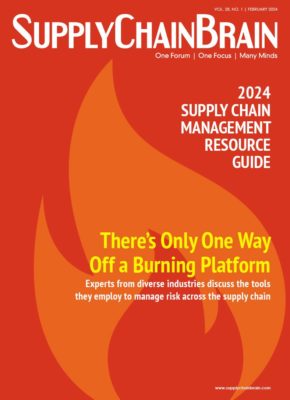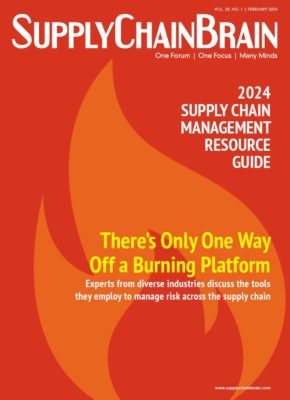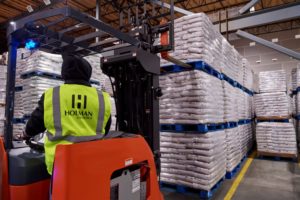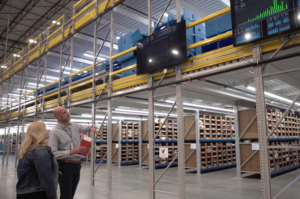Our Publications
Please select a publication below.
Supply Chain Brain Magazine

2024 Supply Chain Management Resource Guide: There's Only One Way Off a Burning Platform
Volume: 28
Edition: 1
Featured
Back to TopAnalyst Reports
Back to TopARTIFICIAL INTELLIGENCE
The AI Revolution: Transforming Supply Chain and Logistics with Artificial Intelligence
Read MoreARTIFICIAL INTELLIGENCE
Accelerating Adoption of Supply Chain AI: The Critical Role of Trust
Read MoreCONSUMER PACKAGED GOODS
Breaking Down Planning and Operations Silos to Smooth Transportation Flow
Read MoreEDUCATION/PROFESSIONAL DEVELOPMENT
Elevate Professional Development to Core Strategy Amid Technology Transformation
Read MoreFACILITY LOCATION PLANNING
How Greenfield Analysis Improves Your Facility Location Planning
Read MoreGLOBAL SUPPLY CHAIN MANAGEMENT
Revolutionizing the World of Commerce: Exploring Innovative Trends in Global Supply Chain Management
Read MoreINDUSTRIAL MANUFACTURING
The Rising Need for Sustainable Practices in Industrial Manufacturing
Read MorePHARMACEUTICALS/BIO-TECH
Five Key Manufacturing Challenges in Autologous Commercial Cell and Gene Therapies
Read MoreREGULATION & COMPLIANCE
Are the Days of Voluntary GHG Reporting Over? Not for EPA SmartWay
Read MoreSUPPLY CHAIN RISK MANAGEMENT
Why Do Companies Need Risk Management in Today's Volatile Marketplace?
Read MoreSUSTAINABILITY/CORPORATE SOCIAL RESPONSIBILITY
Refocusing on High-Impact Sustainability Wins
Read MoreTRANSPORTATION & DISTRIBUTION
Strengthening Freight Networks Amid Mounting Geopolitical and Climate Pressures
Read MoreTRANSPORTATION MANAGEMENT
Driving Efficiency and Excellence with the Latest Innovations in TMS
Read MoreTRANSPORTATION MANAGEMENT





























